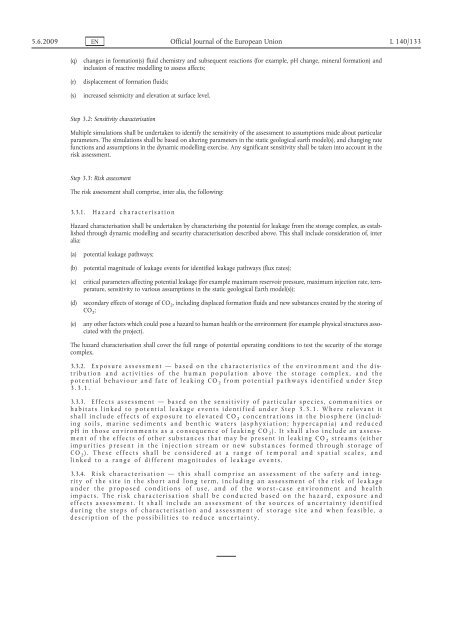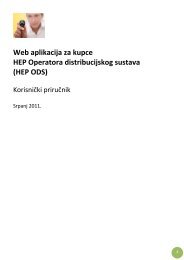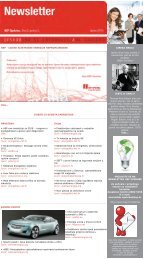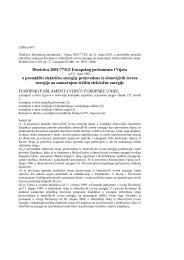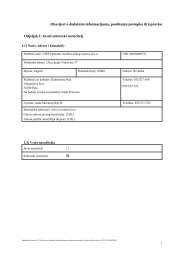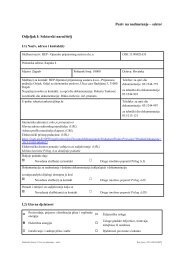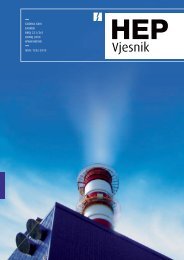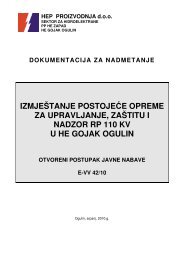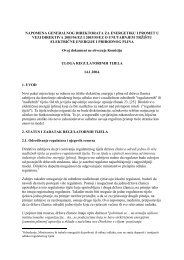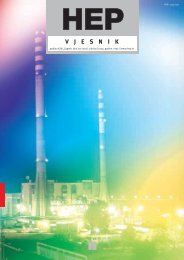Directive 2009/31/EC of the European Parliament and of ... - EUR-Lex
Directive 2009/31/EC of the European Parliament and of ... - EUR-Lex
Directive 2009/31/EC of the European Parliament and of ... - EUR-Lex
You also want an ePaper? Increase the reach of your titles
YUMPU automatically turns print PDFs into web optimized ePapers that Google loves.
5.6.<strong>2009</strong> EN Official Journal <strong>of</strong> <strong>the</strong> <strong>European</strong> Union L 140/133(q)(r)(s)changes in formation(s) fluid chemistry <strong>and</strong> subsequent reactions (for example, pH change, mineral formation) <strong>and</strong>inclusion <strong>of</strong> reactive modelling to assess affects;displacement <strong>of</strong> formation fluids;increased seismicity <strong>and</strong> elevation at surface level.Step 3.2: Sensitivity characterisationMultiple simulations shall be undertaken to identify <strong>the</strong> sensitivity <strong>of</strong> <strong>the</strong> assessment to assumptions made about particularparameters. The simulations shall be based on altering parameters in <strong>the</strong> static geological earth model(s), <strong>and</strong> changing ratefunctions <strong>and</strong> assumptions in <strong>the</strong> dynamic modelling exercise. Any significant sensitivity shall be taken into account in <strong>the</strong>risk assessment.Step 3.3: Risk assessmentThe risk assessment shall comprise, inter alia, <strong>the</strong> following:3.3.1. Hazard characterisationHazard characterisation shall be undertaken by characterising <strong>the</strong> potential for leakage from <strong>the</strong> storage complex, as establishedthrough dynamic modelling <strong>and</strong> security characterisation described above. This shall include consideration <strong>of</strong>, interalia:(a)(b)(c)(d)(e)potential leakage pathways;potential magnitude <strong>of</strong> leakage events for identified leakage pathways (flux rates);critical parameters affecting potential leakage (for example maximum reservoir pressure, maximum injection rate, temperature,sensitivity to various assumptions in <strong>the</strong> static geological Earth model(s));secondary effects <strong>of</strong> storage <strong>of</strong> CO 2 , including displaced formation fluids <strong>and</strong> new substances created by <strong>the</strong> storing <strong>of</strong>CO 2 ;any o<strong>the</strong>r factors which could pose a hazard to human health or <strong>the</strong> environment (for example physical structures associatedwith <strong>the</strong> project).The hazard characterisation shall cover <strong>the</strong> full range <strong>of</strong> potential operating conditions to test <strong>the</strong> security <strong>of</strong> <strong>the</strong> storagecomplex.3.3.2. Exposure assessment — based on <strong>the</strong> characteristics <strong>of</strong> <strong>the</strong> environment <strong>and</strong> <strong>the</strong> distribution<strong>and</strong> activities <strong>of</strong> <strong>the</strong> human population above <strong>the</strong> storage complex, <strong>and</strong> <strong>the</strong>potential behaviour <strong>and</strong> fate <strong>of</strong> leaking CO 2 from potential pathways identified under Step3.3.1.3.3.3. Effects assessment — based on <strong>the</strong> sensitivity <strong>of</strong> particular species, communities orhabitats linked to potential leakage events identified under Step 3.3.1. Where relevant itshall include effects <strong>of</strong> exposure to elevated CO 2 concentrations in <strong>the</strong> biosphere (includingsoils, marine sediments <strong>and</strong> benthic waters (asphyxiation; hypercapnia) <strong>and</strong> reducedpH in those environments as a consequence <strong>of</strong> leaking CO 2 ). It shall also include an assessment<strong>of</strong> <strong>the</strong> effects <strong>of</strong> o<strong>the</strong>r substances that may be present in leaking CO 2 streams (ei<strong>the</strong>rimpurities present in <strong>the</strong> injection stream or new substances formed through storage <strong>of</strong>CO 2 ). These effects shall be considered at a range <strong>of</strong> temporal <strong>and</strong> spatial scales, <strong>and</strong>linked to a range <strong>of</strong> different magnitudes <strong>of</strong> leakage events.3.3.4. Risk characterisation — this shall comprise an assessment <strong>of</strong> <strong>the</strong> safety <strong>and</strong> integrity<strong>of</strong> <strong>the</strong> site in <strong>the</strong> short <strong>and</strong> long term, including an assessment <strong>of</strong> <strong>the</strong> risk <strong>of</strong> leakageunder <strong>the</strong> proposed conditions <strong>of</strong> use, <strong>and</strong> <strong>of</strong> <strong>the</strong> worst-case environment <strong>and</strong> healthimpacts. The risk characterisation shall be conducted based on <strong>the</strong> hazard, exposure <strong>and</strong>effects assessment. It shall include an assessment <strong>of</strong> <strong>the</strong> sources <strong>of</strong> uncertainty identifiedduring <strong>the</strong> steps <strong>of</strong> characterisation <strong>and</strong> assessment <strong>of</strong> storage site <strong>and</strong> when feasible, adescription <strong>of</strong> <strong>the</strong> possibilities to reduce uncertainty.


